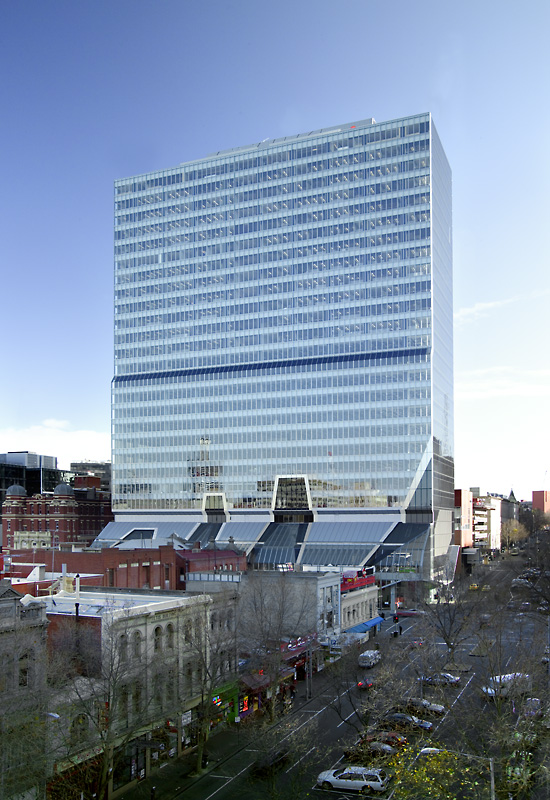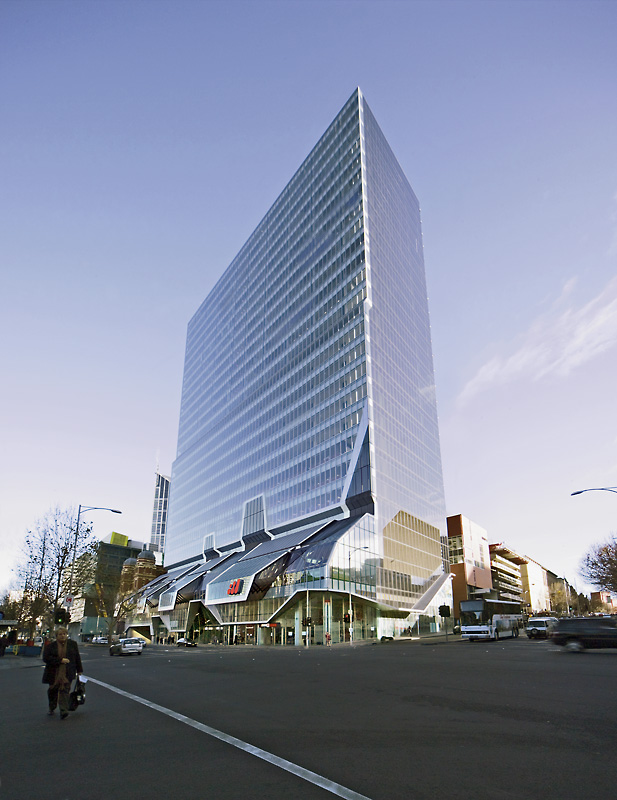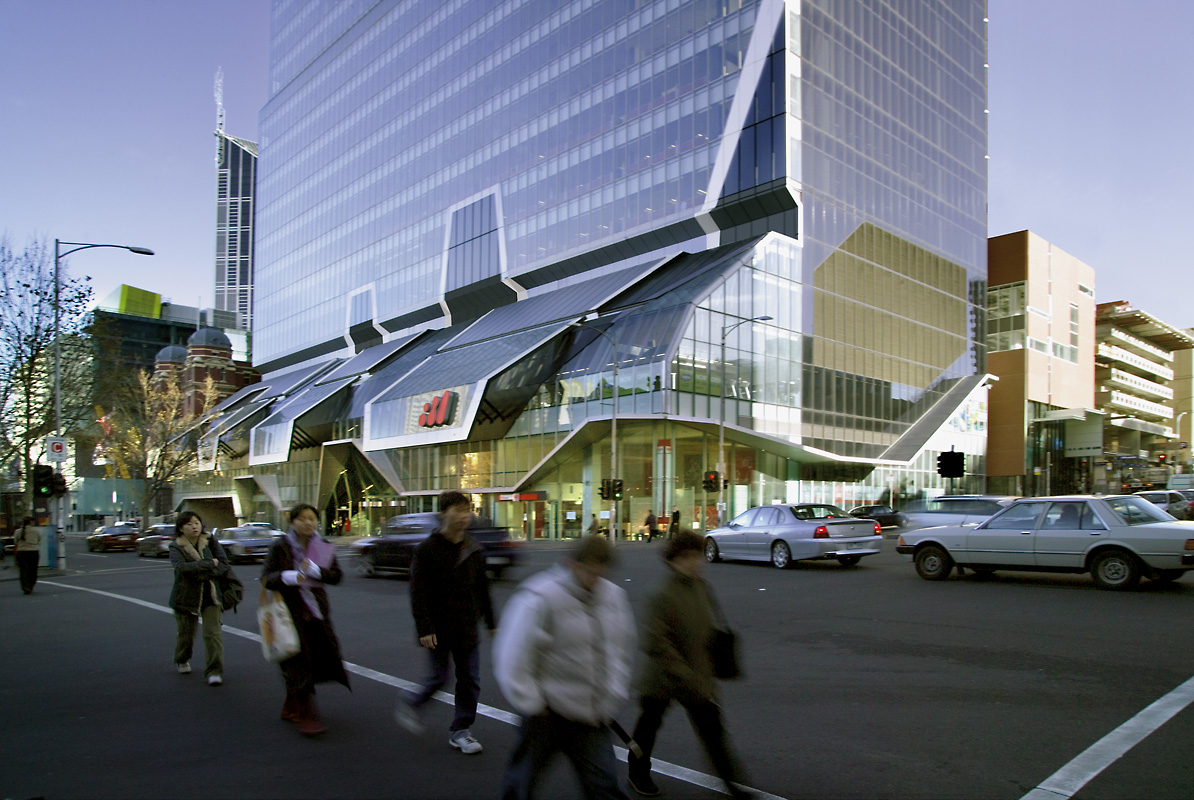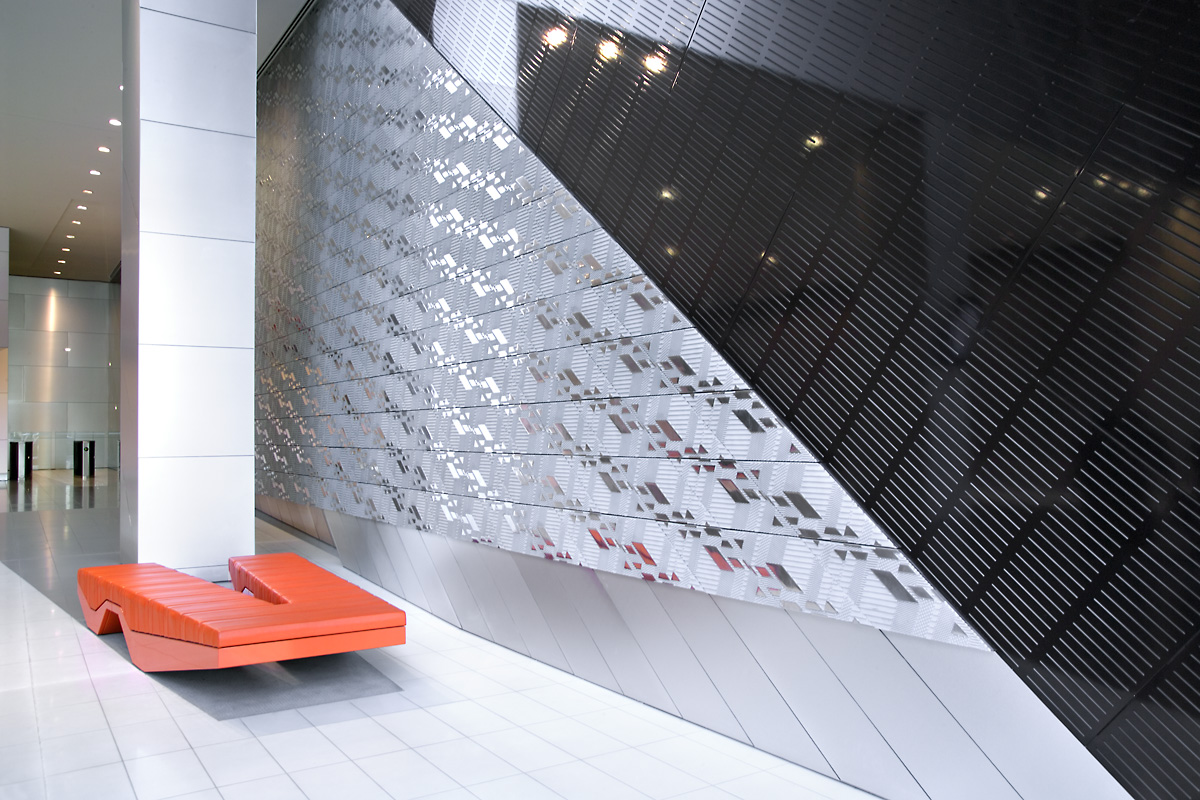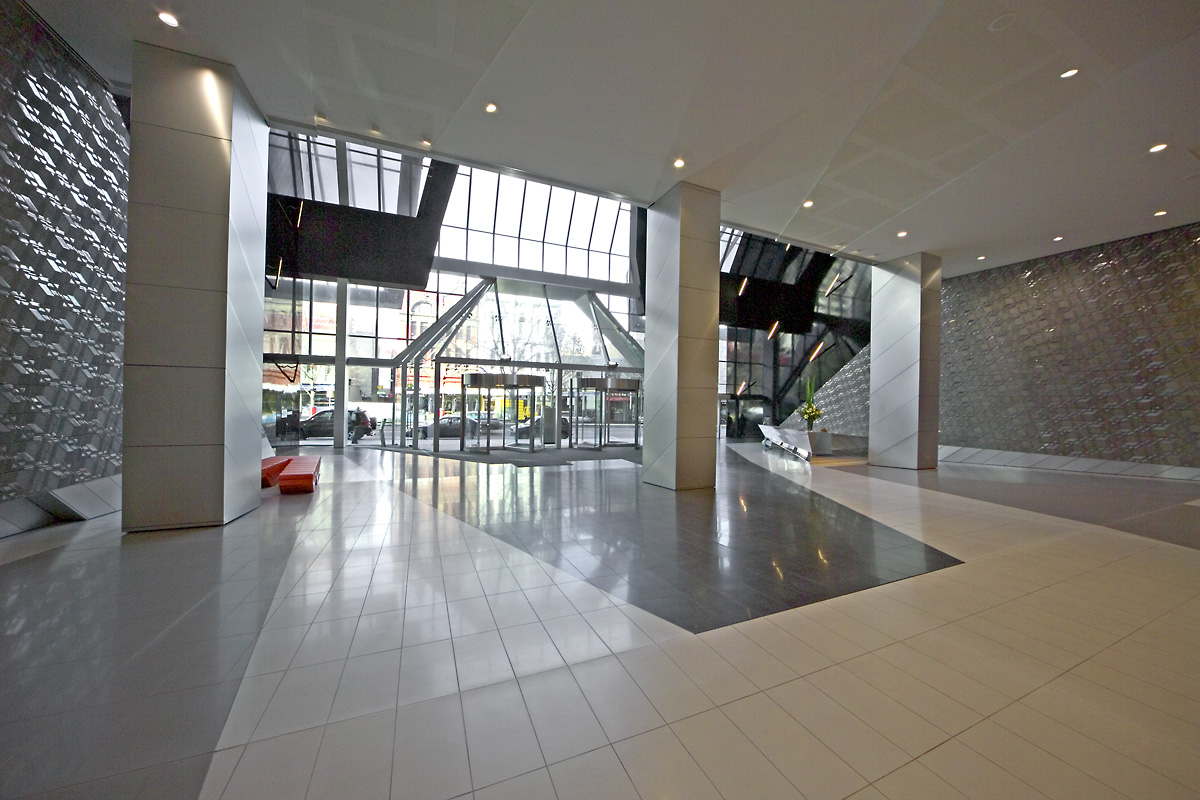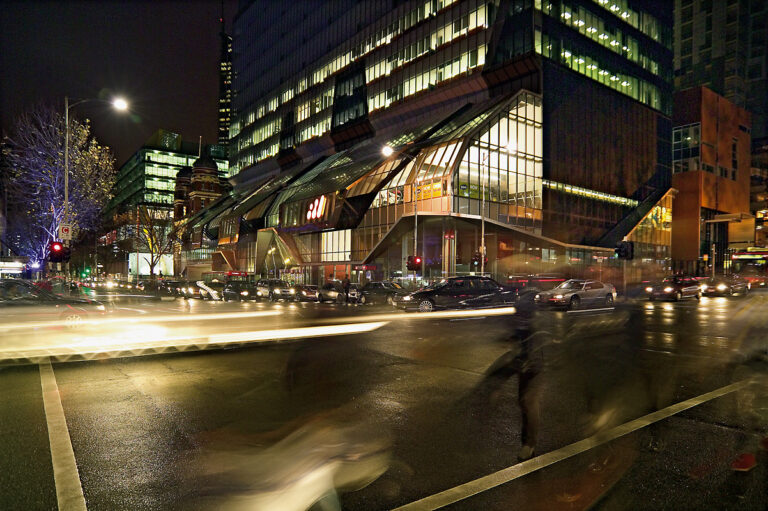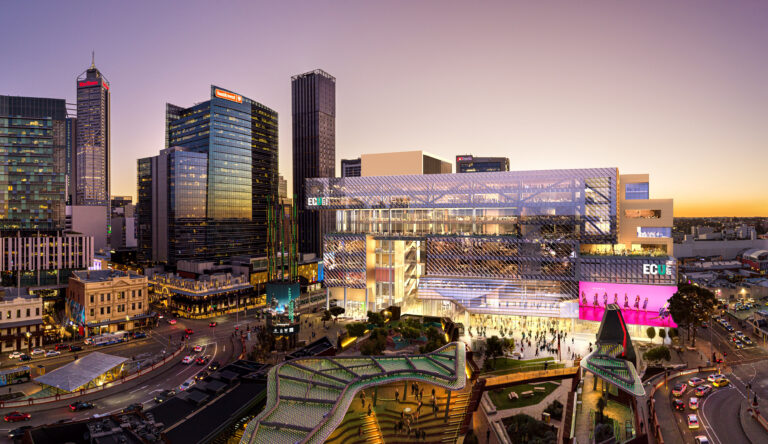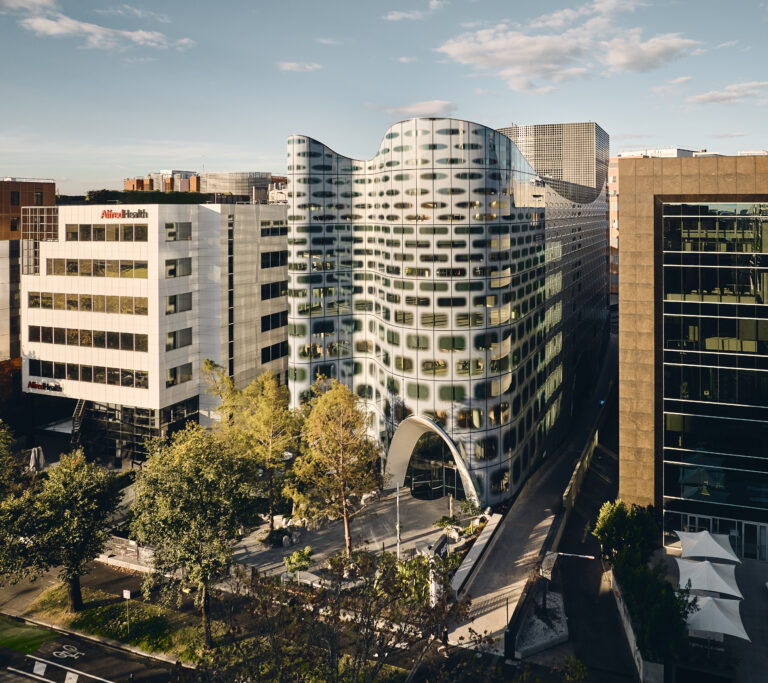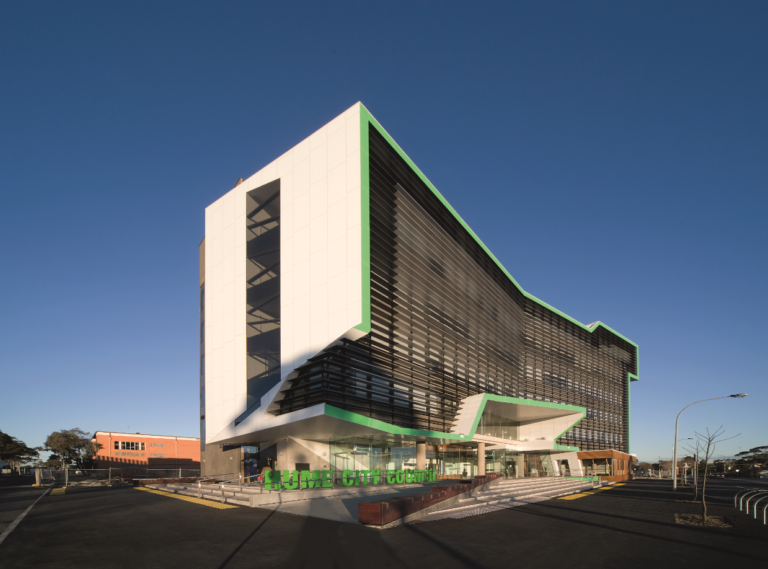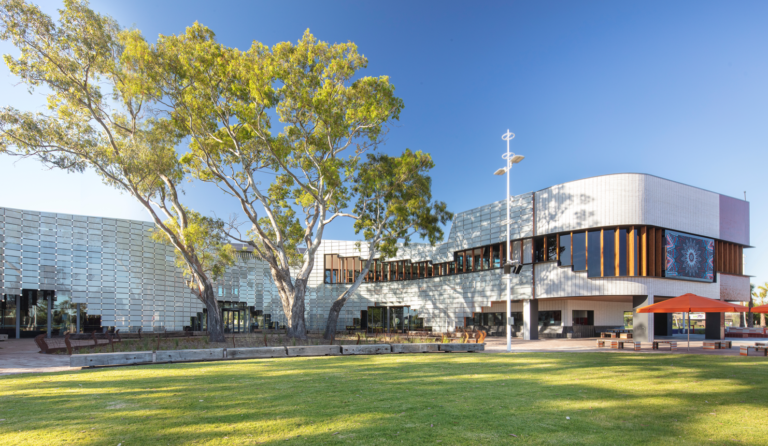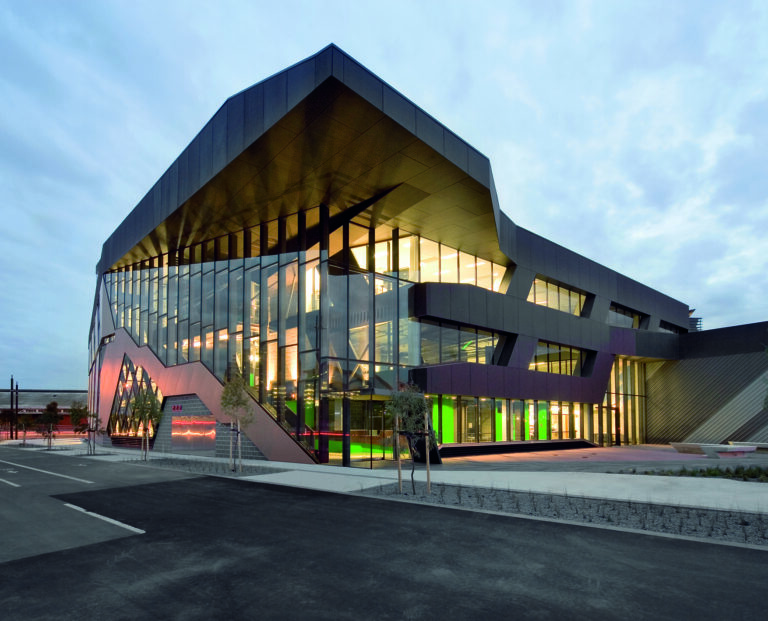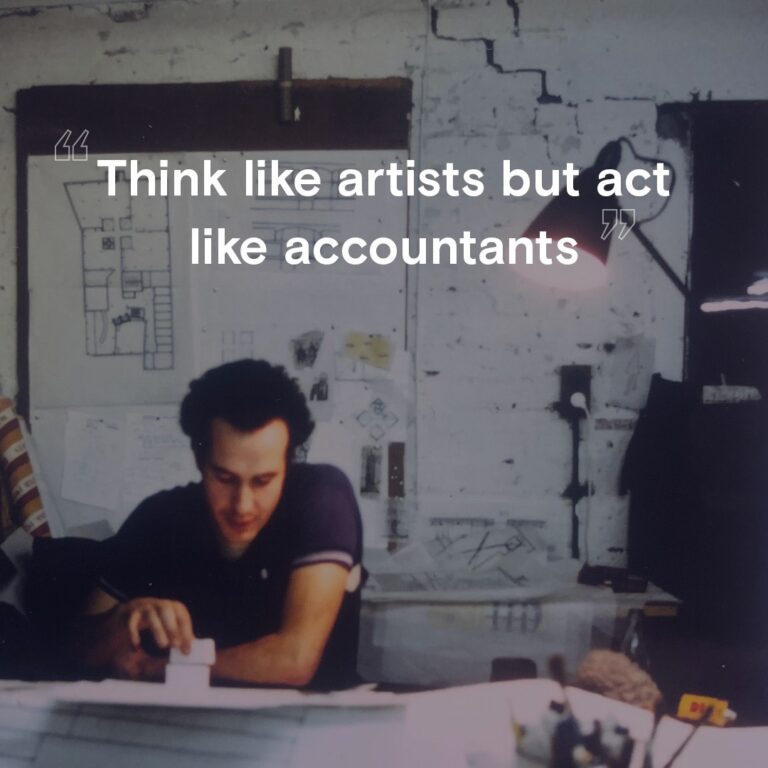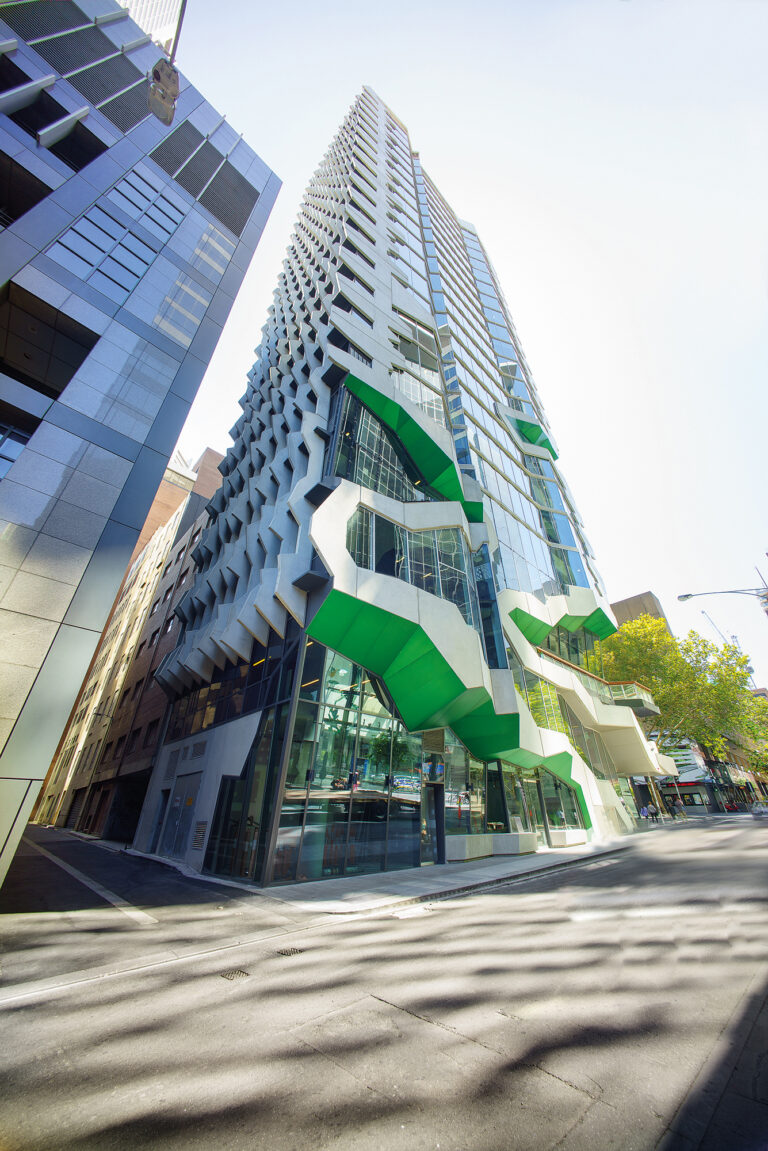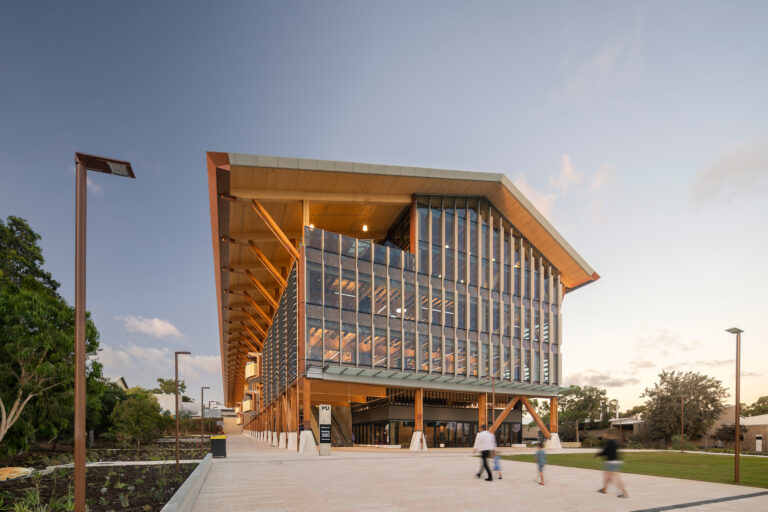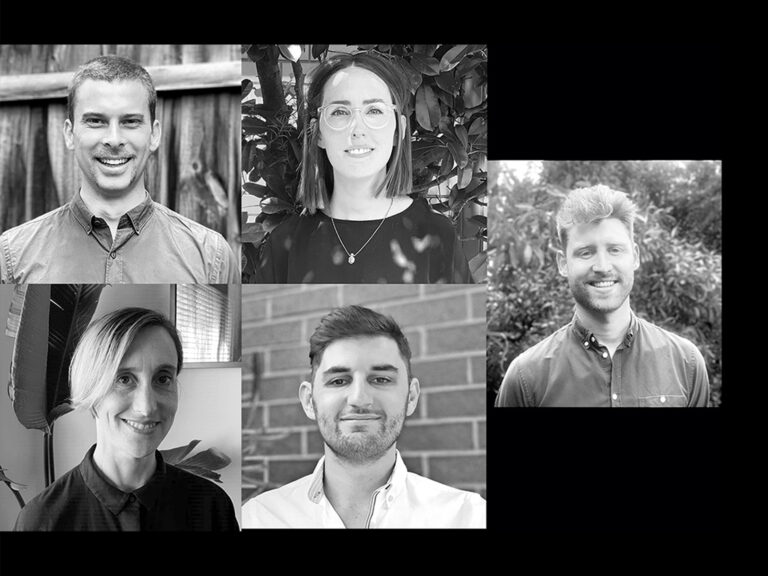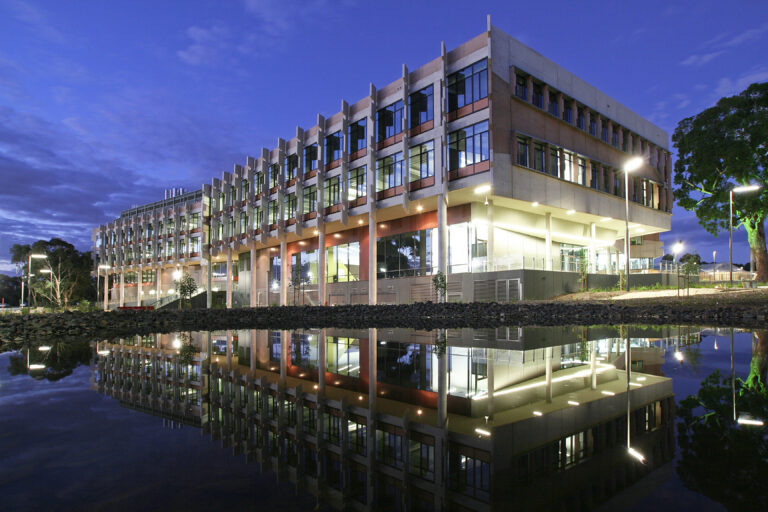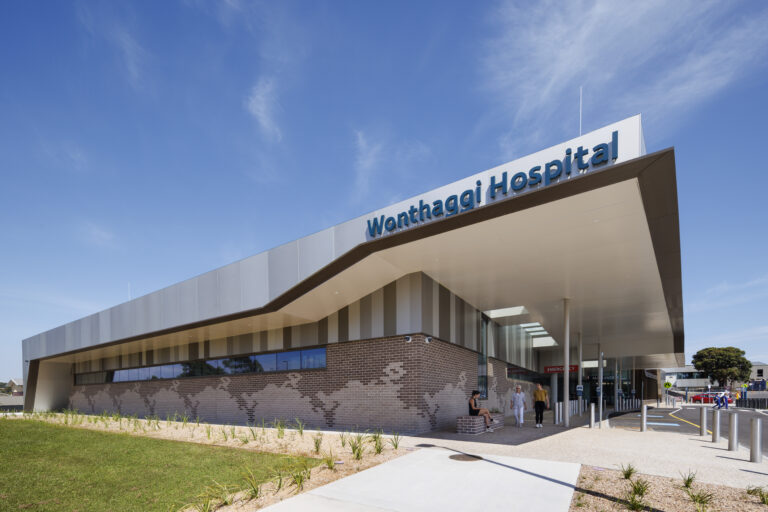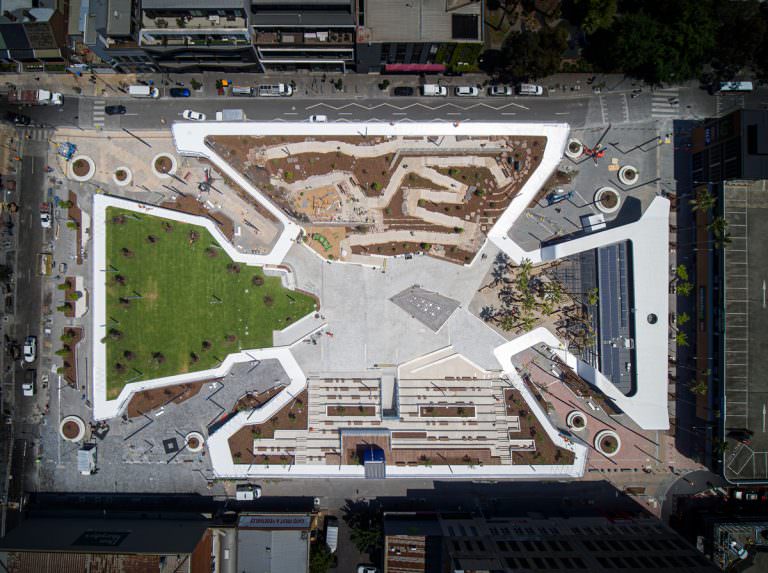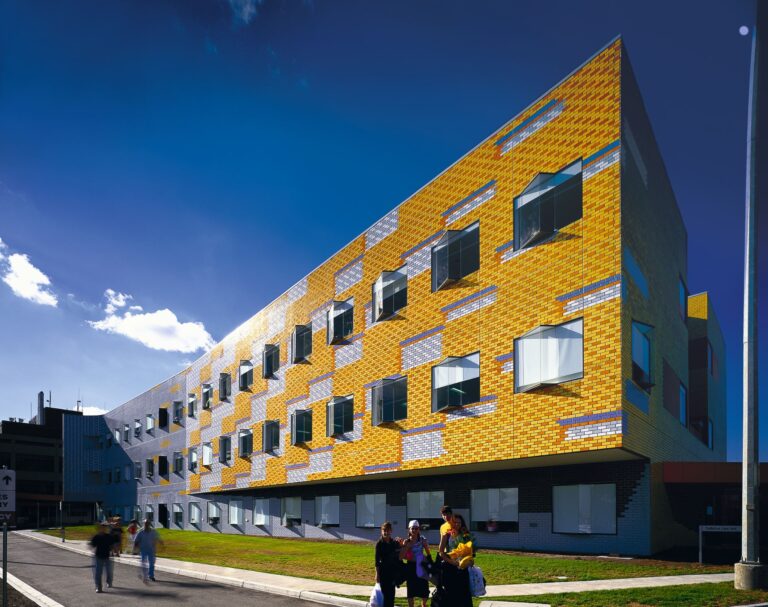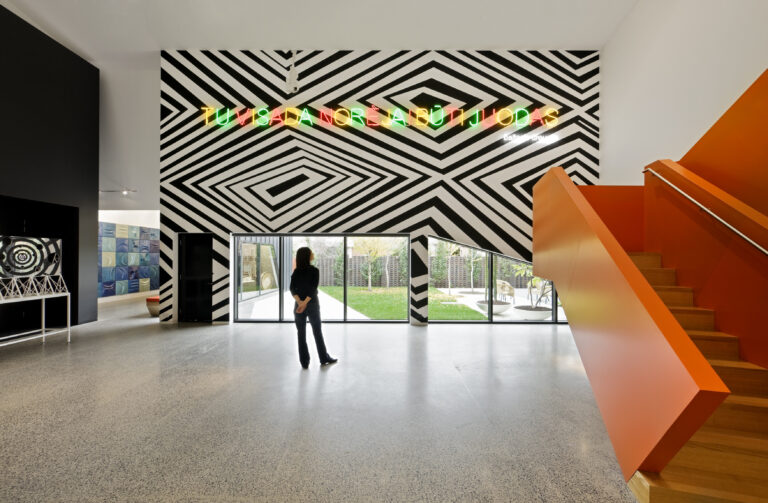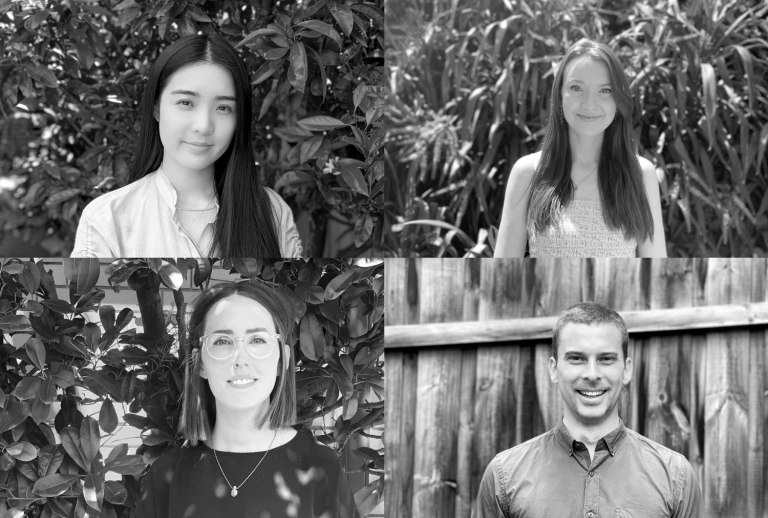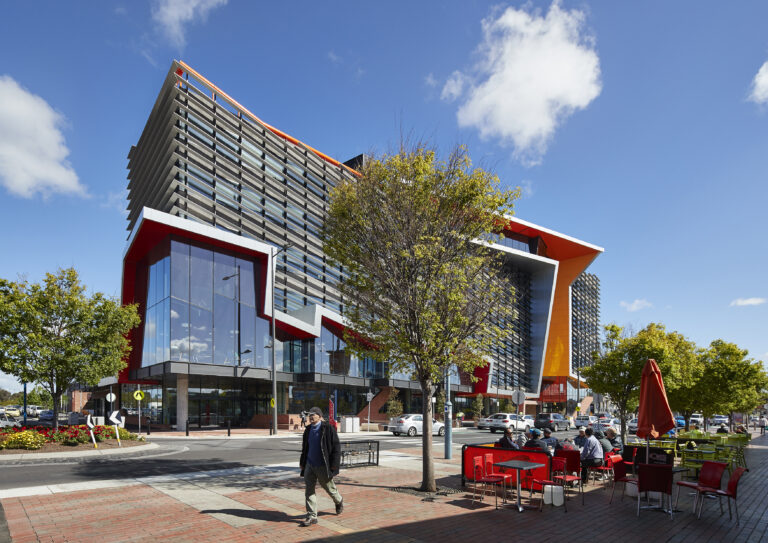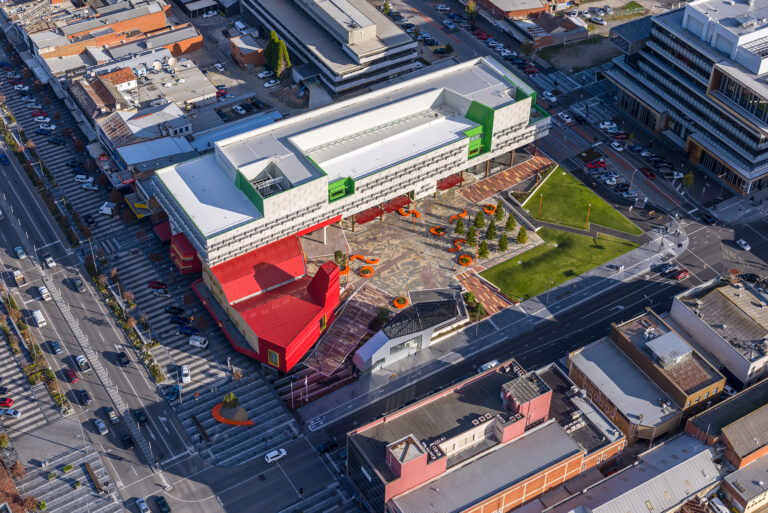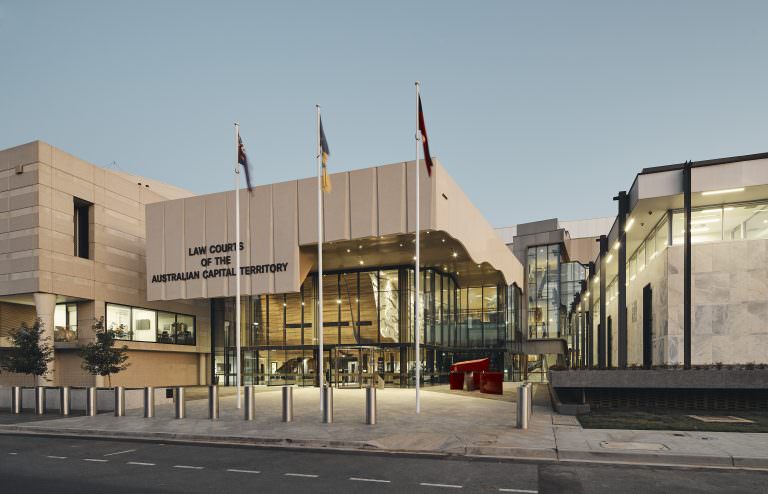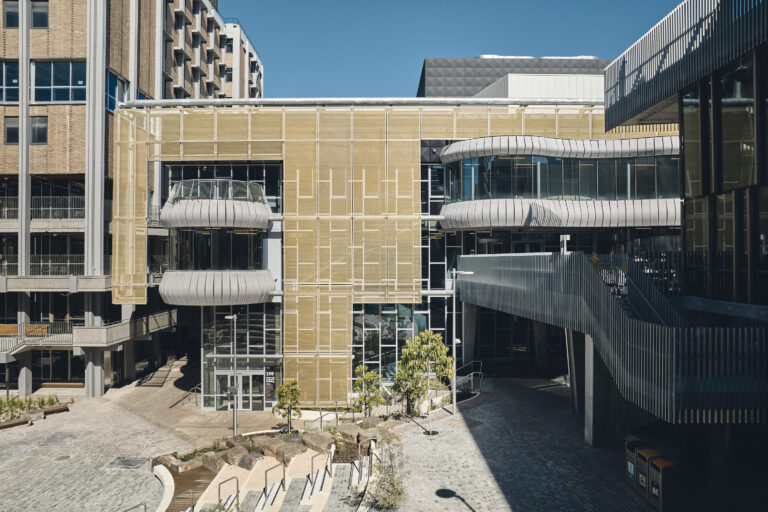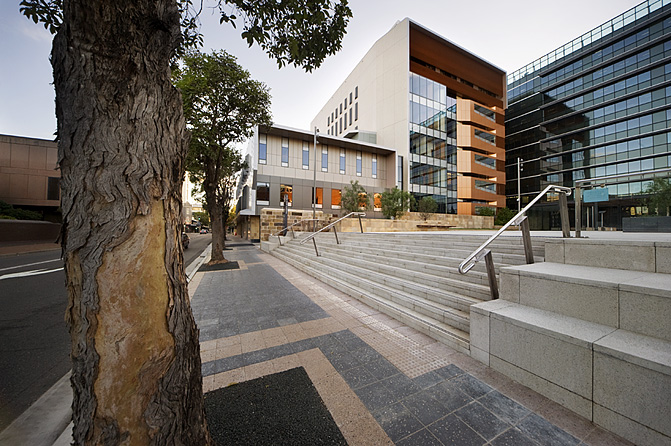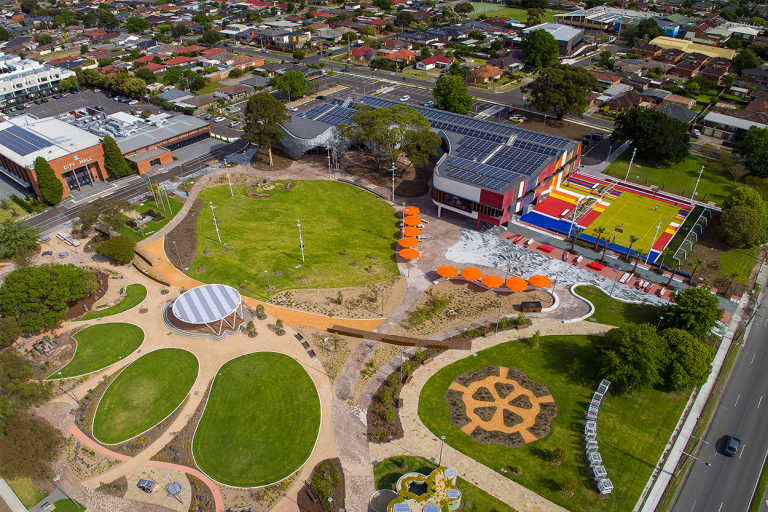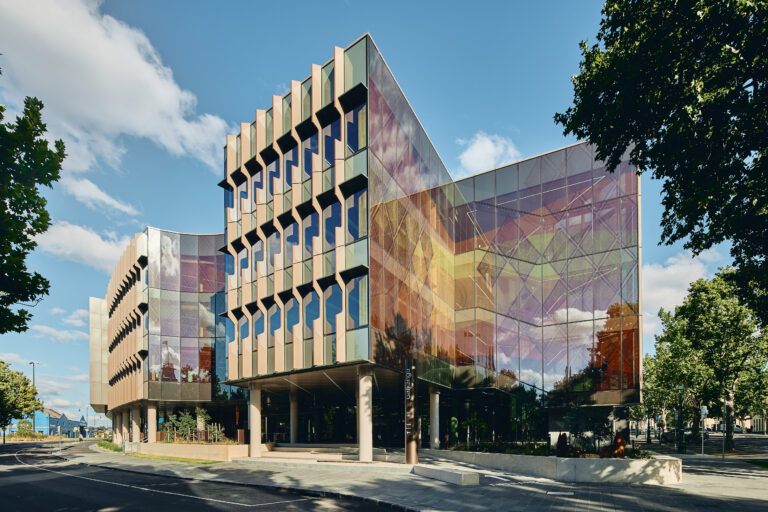Exploring possibilities of a new workplace
Our design for the BHP Billiton Global Headquarters is the result of a BHP Billiton agreement with Grocon to relocate BHP to the QV Village, creating a substantial corporate presence for the site. The project is fully integrated with the masterplan for the QV Village, incorporating mixed uses of retail, apartments and office space. With this central location in Melbourne’s CBD, the design supports BHP’s strategy of a more collaborative and interconnected workplace. Commenting on the significance of the building’s design, former BHP CEO Andrew Mackenzie said, “Our new head office is a distinctive architectural statement, in the heart of the Australian business community. It is designed to help us collaborate and share ideas in an open and enjoyable way. This means we can work together to solve problems and generate the best ideas and best thinking.”
The design accommodates large numbers of people in multidisciplinary teams. Exceptionally large, flexible floor plates, which are similar over all the levels of the building provide an open work environment. These floor plates, together with a side services core, provide optimum floor plan efficiency and maximum flexibility in fit out, from cellular clustered office plan arrangements to freeform workstation plans. The building is designed so that stacks of 3 floors are physically linked via an open stair to improve connectivity in the work environment.


